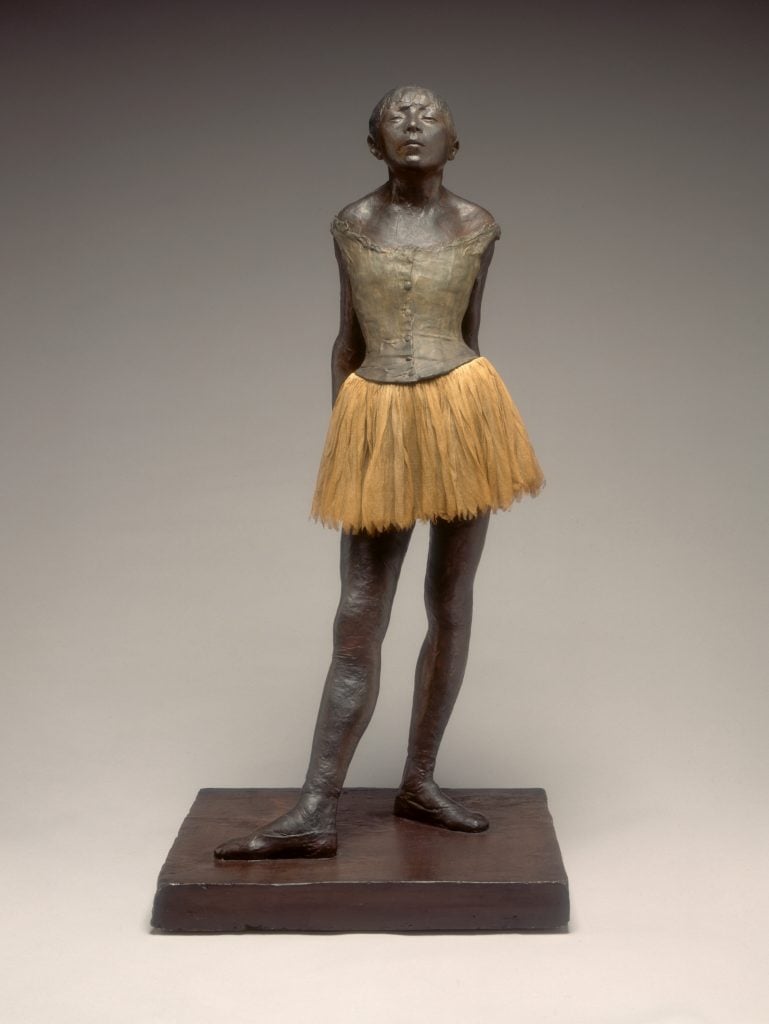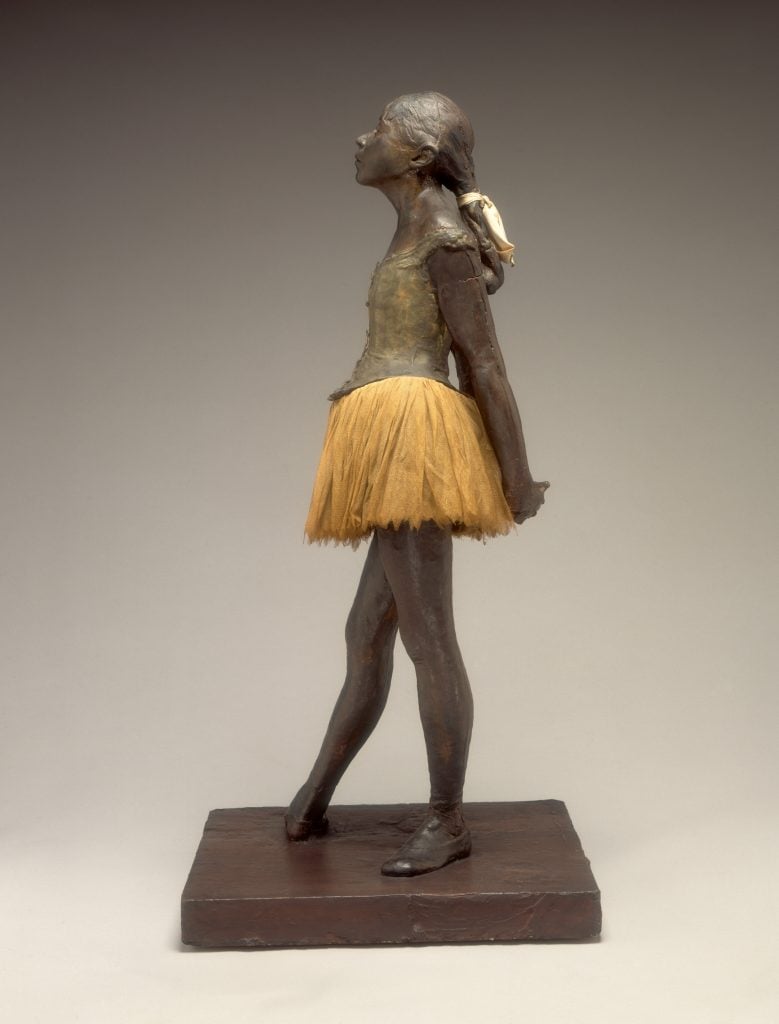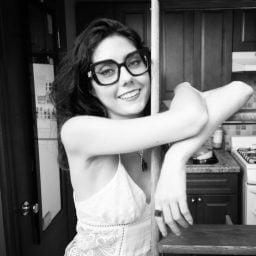Art World
Art Bites: Who Was Degas’s ‘Little Dancer’?
Meet the young ballerina who posed for Degas's controversial sculpture.

The only sculpture that French painter Edgar Degas ever shared with the public sparked an immediate outrage. Degas debuted his true-to-life amalgamation of beeswax, human hair, and more, depicting his Little Dancer Aged Fourteen (1879–81) at the Impressionist showcase of 1881 in Paris. Art critic Paul Mantz notoriously decried the figure as a “flower of precocious depravity,” observing that “she moves her face forward, or rather her little muzzle—and this word is completely correct because the little girl is the beginning of a rat.”
The public did come around, by the 1920s. There are now 27 bronze casts of Little Dancer and two plaster casts scattered across institutions and collections around the world. The original, however, sits in a protective glass case (which climate protesters attacked last year) at Washington, D.C.’s National Gallery of Art. Mantz’s cutting insult likening the figure to a rodent wasn’t born purely of mean-spiritedness. Young girls of destitute backgrounds flocked to French ballets of the late 1800s, often to help generate income for their families. These dancers, vying for stardom and wealthy suitors, were colloquially called opera rats. But Degas’s Little Dancer had a name: Marie van Goethem.
The National Gallery of Art explained that Van Goethem was the daughter of a tailor and a laundress. Her older sister Antoinette helped support their family through sex work. The younger Van Goethem started dancing by the time she was 11, because that’s when Degas met her. Most patrons leveraged their memberships to prey on rising opera rats backstage, plying them for physical affection with the promise of a better life.

Edgar Degas, Little Dancer Aged Fourteen, plaster cast possibly 1920–21, after original wax modeled 1878–81. Courtesy of the National Gallery of Art, Washington, D.C.
Degas, though, used his access to Van Goethem to employ her as a model. “He paid Marie a fair wage and to our knowledge he never took advantage of her,” National Gallery curator of 19th-century French paintings Kimberly Jones told me. “He was known for being fairly demanding of his models and asking them to hold uncomfortable poses, but there has never been any allegations of impropriety. Marie was probably safer with Degas than anywhere else.”
Van Goethem was let go from the ballet in 1882, before she got to take the dance exam, because she showed up late to a single rehearsal. No one knows whether she was talented. “We also don’t know when or how Degas met her or why she stood out to Degas in particular,” Jones noted. “Given the way he portrays her, focusing on her gangly limbs and ungainly posture, it may have simply been her adolescent awkwardness that he found most interesting.”
Once Van Goethem left the theater, she also disappeared from the public eye. No one knows what happened to her—though a 2014 musical centered on her story ends on a hopeful note. It’s said that her younger sister Charlotte became a talented ballerina. Art history isn’t even sure if Van Goethem knew she’d incited an uproar. “It seems unlikely if not improbable that she wouldn’t have heard about it,” Jones mused. “Scandal always travels fast.”
What’s the deal with Leonardo’s harpsichord-viola? Why were Impressionists obsessed with the color purple? Art Bites brings you a surprising fact, lesser-known anecdote, or curious event from art history. These delightful nuggets shed light on the lives of famed artists and decode their practices, while adding new layers of intrigue to celebrated masterpieces.





